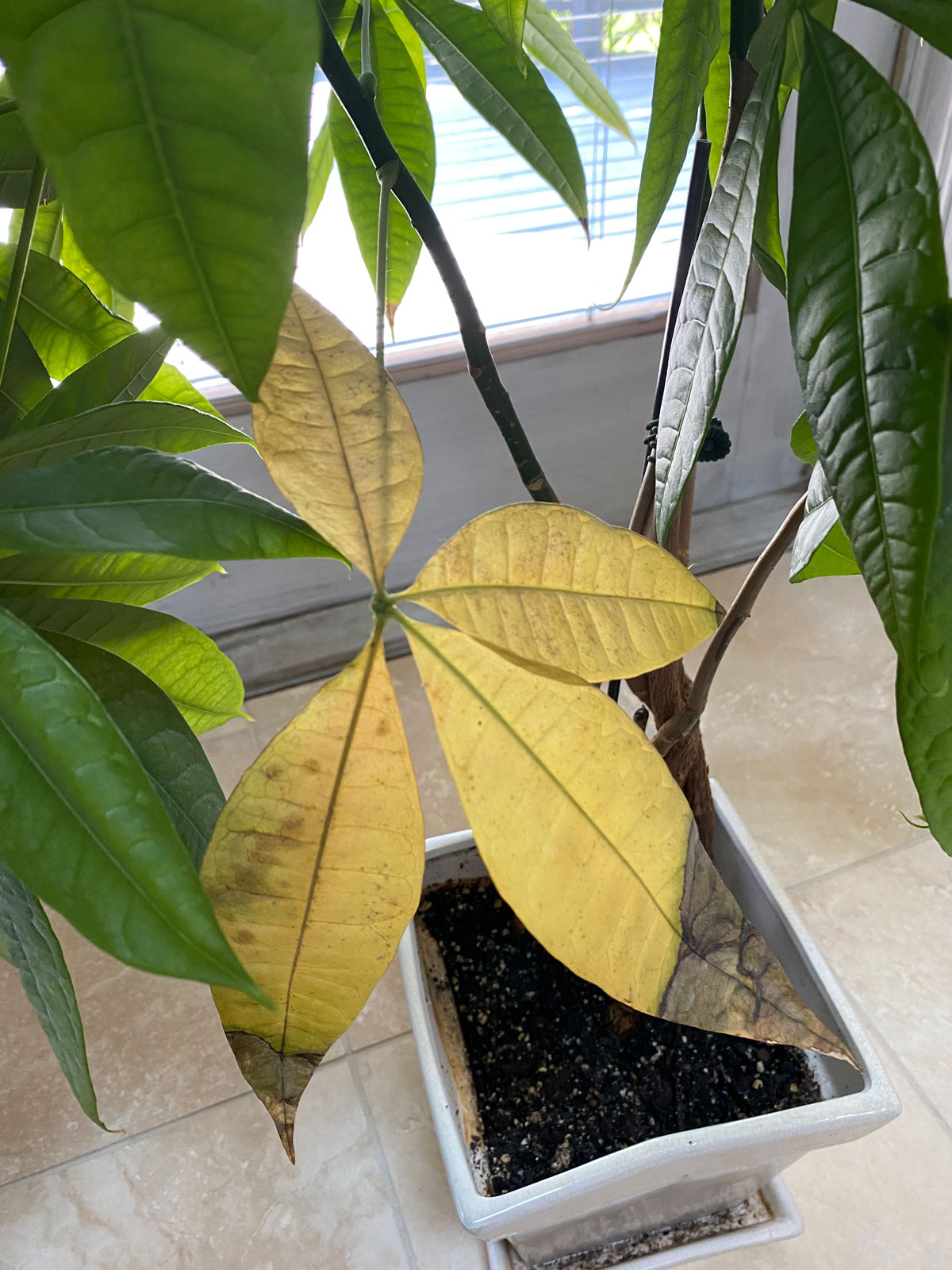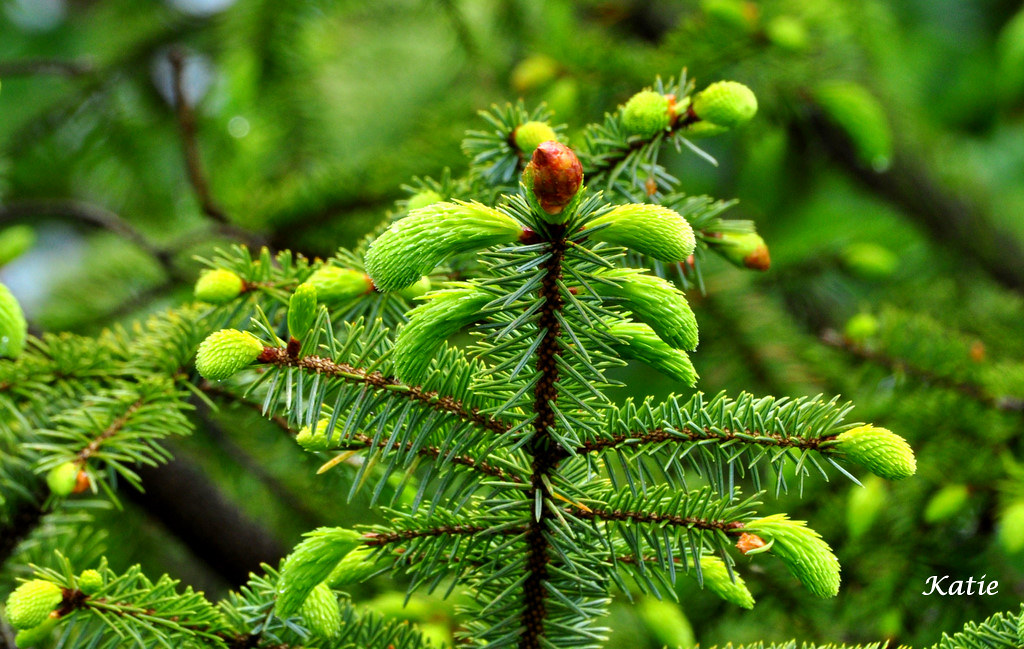
River Birch Tree Leaves Turning Yellow: Top Tips for Reviving Your Tree
River birch tree leaves turning yellow may be caused by a variety of factors, including nutrient deficiencies, pests, diseases, or environmental stressors.
It can be disheartening to see the leaves of your beloved river birch tree turn yellow. However, there are practical steps you can take to revive your tree and bring it back to its vibrant, healthy state. In this blog post, we will explore the common causes of yellowing leaves in river birch trees and provide expert tips on reviving and maintaining your tree’s beauty. Don’t despair because you can help your river birch tree flourish again with the proper knowledge and care.
Understanding The River Birch Tree
River birch trees are beautiful additions to any landscape, but if their leaves turn yellow, it may indicate a problem. Understanding the factors that can cause this can help you keep your river birch healthy and green.
River Birch Tree Leaves Turning Yellow
The river birch tree, scientifically known as Betula nigra, is a beautiful deciduous tree native to the eastern and central united states. Commonly found near riverbanks and other wet areas, these trees are known for their stunning peeling bark, which ranges in color from reddish-brown to creamy white.
Understanding the characteristics of the river birch tree and the importance of healthy leaves is crucial to maintaining a thriving tree.
Characteristics Of The River Birch Tree:
- Peeling bark: One of the most distinct features of the river birch tree is its unique peeling bark. This characteristic provides a visually striking appearance that adds interest and texture to any landscape.
- Yellow-green leaves: River birch tree leaves are typically a dark green during the growing season. However, it is essential to note that the leaves of these trees can turn yellow for various reasons, indicating potential issues with the tree’s health.
- Moderate to fast growth: River birch trees are known for their relatively fast growth rate. With proper conditions and care, these trees can grow quite large, reaching heights of up to 70 feet or more.
- Tolerates wet areas: As a tree native to riverbanks and wet areas, the river birch is well-suited to tolerate moist soil conditions. This makes it an excellent choice for landscaping near bodies of water or in areas with poor drainage.
Importance Of Healthy Leaves For A Thriving Tree:
- Photosynthesis: Leaves play a vital role in photosynthesis, essential for a tree’s growth and overall health. Healthy leaves absorb sunlight and convert it into energy the tree can use for various functions.
- Nutrient absorption: Leaves are the main site for nutrient absorption in trees. Through tiny pores called stomata, leaves absorb nutrients from the air and transfer them to other parts of the tree, contributing to its overall nutrition.
- Oxygen production: Another critical function of healthy leaves is oxygen production. During photosynthesis, leaves release oxygen into the atmosphere, helping to improve air quality and support the well-being of other organisms.
- Environmental indicator: The color and condition of leaves can provide valuable insight into a tree’s health. Yellowing leaves, for example, may indicate nutrient deficiencies or other underlying issues that need attention.
- Aesthetics: Lastly, healthy leaves contribute to the aesthetic appeal of the river birch tree. Their vibrant green color enhances the tree’s beauty, making it a focal point in any landscape.
Understanding the characteristics of the river birch tree and the significance of healthy leaves is crucial for ensuring the well-being and longevity of these stunning trees. By paying attention to their unique traits, providing proper care, and addressing any issues promptly, you can enjoy the beauty and benefits of the river birch in your outdoor spaces.
Signs Of Trouble: Yellowing Leaves
River birch trees may indicate trouble when their leaves begin to turn yellow. This could signify various issues like nutrient deficiencies, pests, or diseases. It is essential to address these symptoms promptly to ensure the health and vitality of the tree.
Recognizing The Yellowing Of River Birch Tree Leaves:
When it comes to the health of your river birch tree, nothing is more concerning than seeing its leaves turn yellow. Yellowing leaves can indicate underlying issues, ranging from nutrient deficiencies to pest infestations or environmental stress. Understanding the signs of trouble can help you take appropriate action to restore the tree’s health.
Here are some key points to recognize the yellowing of river birch tree leaves:
- Gradual yellowing and dropping: If you notice a gradual yellowing of leaves from the tree’s base upwards, followed by their premature dropping, it could indicate an underlying issue.
- Pale yellow color: The yellowing leaves may show a pale shade of yellow, indicating a disruption in chlorophyll production or nutrient uptake.
- Spotted or mottled appearance: Yellowing leaves with irregular spots or mottled patterns may suggest the presence of fungal or bacterial infections.
- Wilting or curling: Leaves that turn yellow and exhibit wilting or curling can indicate moisture stress or root-related problems.
- Stunted growth: The tree’s overall growth may be negatively affected, with shorter shoots or smaller leaves accompanying the yellowing foliage.
Why The Leaves Turn Yellow:
There are multiple reasons why leaves on river birch trees may turn yellow. Understanding these causes can help identify the issue affecting your tree’s health. Here are some common factors that lead to yellowing leaves:
- Nutrient deficiencies: Lack of essential nutrients, such as iron or magnesium, can result in yellowing leaves. This is often seen in soils with poor fertility or imbalances in pH levels.
- Water stress: Insufficient or excessive watering can lead to yellowing leaves. Overwatering can suffocate the roots, causing them to rot, while underwatering deprives the tree of necessary moisture.
- Environmental factors: Extreme temperatures, excessive sun exposure, wind damage, or poor air circulation can all contribute to yellowing leaves.
- Pest infestations: Insect pests like aphids, birch leafminers, or mites can damage the leaves, causing them to turn yellow and drop prematurely.
- Disease infections: Fungal or bacterial infections, such as leaf spot or canker diseases, can lead to leaf yellowing.
By recognizing the signs of trouble and understanding why river birch tree leaves turn yellow, you can take appropriate measures to address the issue and promote the tree’s overall health and vitality. If you’re uncertain about the cause or need professional assistance, consult a certified arborist or horticulturist for accurate diagnosis and treatment recommendations.
Common Causes Of Yellowing Leaves
The river birch tree’s yellowing leaves can occur due to various factors, including nutrient deficiencies, overwatering, fungal infections, or environmental stressors such as heat or drought. Identifying and addressing the underlying cause is crucial for maintaining the tree’s health and vitality.
Yellowing leaves in river birch trees can be a concern for many gardeners. Understanding the common causes of this issue is essential for maintaining the health and vitality of your trees. Here are some factors that can lead to yellow leaves on river birch trees:
- Lack of water and dehydration: Insufficient watering can cause the leaves of river birch trees to turn yellow. Be sure to provide regular watering, especially during dry periods. When properly hydrated, river birch trees will have vibrant green leaves.
- Nutrient deficiencies in the soil: Poor soil conditions can result in yellowing leaves on river birch trees. Certain nutrients, like iron or nitrogen, are essential for proper leaf development. If the soil lacks these nutrients, the leaves may become yellow. Conduct soil tests and consult with a professional to determine if deficiencies exist.
- Insect infestation and diseases: Insect pests, such as aphids or leaf miners, can lead to yellowing leaves on river birch trees. These pests feed on the sap of the leaves, compromising their health. Diseases like leaf spots or powdery mildew can also cause yellow patches on the leaves. Regularly inspect your trees for signs of pests or diseases.
Remember, yellow leaves on river birch trees can indicate an underlying issue that needs to be addressed. Identifying the cause and taking appropriate actions can help your trees regain their vibrancy and ensure their overall well-being.
Reviving Your River Birch Tree
Is your river birch tree suffering from yellow leaves? Discover effective methods to revive your tree’s health and restore its vibrant green foliage.
River Birch Tree Leaves Turning Yellow
Is your river birch tree leaves turning yellow? Don’t panic! You can take steps to revive your tree and bring back its vibrant green foliage. This section will discuss proper watering techniques and irrigation methods, soil amendment and fertilization, pest control and disease management.
Following these steps can help your river birch tree regain its health and beauty.
Step 1: Proper Watering Techniques And Irrigation Methods:
- Ensure the soil around the tree is moist but not waterlogged.
- Water your tree deeply and less frequently, promoting healthy root development.
- Consider using a drip irrigation system to deliver water directly to the roots.
- Mulch the base of the tree to retain moisture and regulate soil temperature.
Step 2: Soil Amendment And Fertilization:
- Conduct a soil test to determine nutrient deficiencies.
- Amend the soil with organic matter such as compost or well-rotted manure.
- Apply a balanced slow-release fertilizer to provide essential nutrients.
- Follow the recommended application rates and timing for optimal results.
Step 3: Pest Control And Disease Management:
- Inspect your tree regularly for signs of pests or diseases.
- Prune affected branches to prevent the spread of infections.
- Use appropriate insecticides or fungicides as necessary, following label instructions.
- Encourage natural predators like ladybugs or birds to control pest populations.
Remember, it’s important to address the underlying issues causing your river birch tree leaves to turn yellow. By implementing these steps and providing proper care, you can help your tree recover and thrive again. Stay vigilant in your tree maintenance, and in time, you’ll enjoy the lush green foliage you love.
Additional Tips For Tree Revival
If your river birch tree leaves turn yellow, follow these additional tips to revive them. Ensure proper watering, improve drainage, check for pests or diseases, provide adequate sunlight, and add organic fertilizers to promote healthy leaf growth. With these measures, your tree will regain its vibrant green foliage.
Maintaining Proper Drainage Around The Tree
To ensure the health and vitality of your river birch tree, it is crucial to maintain proper drainage around its base. Excess moisture can lead to root rot and other detrimental conditions. Here are some tips to promote adequate drainage:
- Evaluate the soil: Test the soil drainage by digging a small hole near the tree and filling it with water. If the water takes more than a few hours to drain, it indicates poor drainage.
- Improve the soil structure: If the soil is compacted or doesn’t drain well, consider adding organic matter like compost or soil amendments to help improve drainage.
- Redirect water flow: Ensure that the area around the tree is graded away from the trunk to prevent water from pooling. Adjust downspouts or install drainage pipes to divert excess water away from the tree’s root zone.
Pruning And Removing Dead Or Diseased Branches
Regular pruning and removing dead or diseased branches are essential for river birch trees’ overall health and appearance. Here’s what you need to know:
- Identify dead or diseased branches: Inspect the tree for branches that have turned brown or black or show signs of decay. These branches should be pruned to prevent disease spread and improve the tree’s health.
- Use proper pruning techniques: Make clean cuts just outside the branch collar (the swollen area where the branch attaches to the main trunk) to minimize damage and promote healing.
- Prune during the appropriate season: Prune river birch trees during late winter or early spring when they are dormant. Avoid pruning in the summer, as it may stress the tree.
Mulching To Preserve Moisture And Protect The Roots
Mulching plays a vital role in preserving moisture, regulating soil temperature, and protecting river birch tree roots. Follow these guidelines for successful mulching:
- Choose the right mulch: Opt for organic mulches such as wood chips, shredded bark, or compost. These materials conserve moisture and enrich the soil as they decompose.
- Apply an appropriate layer: Spread 2-4 inches of mulch around the tree’s base, taking care not to pile it against the trunk. Leave a small gap between the mulch and the trunk to prevent moisture accumulation and potential rot.
- Replenish mulch regularly: Over time, organic mulches break down. To maintain the benefits, replenish the mulch annually, ensuring a consistent layer.
By adhering to these additional tips for tree revival, you will improve the condition of your river birch tree, enhance its aesthetics, and promote its long-term health. Remember to maintain proper drainage, prune and remove dead or diseased branches, and utilize mulch to preserve moisture and protect the roots.
Preventative Measures For Future Leaf Yellowing
To prevent future leaf yellowing in river birch trees, it is important to provide proper care, such as ensuring adequate watering, providing sufficient sunlight, and addressing nutrient deficiencies. Regular inspections and prompt action can help maintain the health and vibrancy of the leaves.
River birch trees are known for their beautiful foliage, but seeing their leaves turn yellow can be disheartening. Fortunately, there are preventative measures you can take to ensure future leaf yellowing is minimized. By regularly inspecting and caring for your trees, monitoring soil moisture levels, and providing proper nutrition and soil pH, you can help maintain the health and vibrancy of your river birch tree’s leaves.
Regular Tree Inspection And Care
- Conduct visual inspections of your river birch trees regularly to identify any signs of stress or disease.
- Look for any yellowing or browning leaves and spots, holes, or abnormal growth patterns.
- Prune away any dead or diseased branches, making clean cuts just above a healthy bud or branch collar.
- Remove any fallen leaves or debris from around the base of the trees to avoid attracting pests or fungal pathogens.
- Apply a layer of organic mulch around the base of the trees to help conserve moisture and regulate soil temperature.
Monitoring Soil Moisture Levels And Adjusting Watering Accordingly
- Use a soil moisture meter or probe to monitor the moisture levels around your river birch trees.
- Keep in mind that river birch trees prefer moist soil, but it should not be waterlogged.
- Water deeply and thoroughly when the top few inches of soil feel dry to the touch.
- Avoid frequent shallow watering, as it can lead to poor root development.
- Consider installing a drip irrigation system or soaker hose to provide a consistent and even water supply to the trees.
Ensuring Proper Nutrition And Soil Ph
- Conduct a soil test to determine the ph level and nutrient content of the soil around your river birch trees.
- River birch trees prefer slightly acidic to neutral soil with a ph between 5.0 and 7.0.
- Adjust the ph of the soil if necessary by adding amendments like elemental sulfur or agricultural lime.
- Provide balanced nutrition by applying a slow-release fertilizer specifically formulated for trees.
- Follow the recommended dosage and timing instructions on the fertilizer package.
Taking proactive measures to care for your river birch trees can help prevent leaf yellowing in the future. By regularly inspecting and caring for your trees, monitoring soil moisture levels, and ensuring proper nutrition and soil ph, you can keep your river birch tree’s leaves vibrant and healthy.
Remember, a healthy tree is a happy tree!
Frequently Asked Questions Of River Birch Tree Leaves Turning Yellow
Why Are The Leaves Of My River Birch Tree Turning Yellow?
Yellow leaves on a river birch tree can indicate several issues, including overwatering, nutrient deficiencies, or pest infestation. Overwatering can lead to root rot, while nutrient deficiencies can result from poor soil quality. Pests like aphids or mites can also cause yellowing.
Properly watering, fertilizing, and monitoring for pests can help resolve the issue.
How Can I Determine If My River Birch Tree Is Being Overwatered?
Check the soil around the tree’s base to assess if it’s too wet. Overwatering can lead to yellowing leaves due to root suffocation and rot. If the soil feels consistently wet or waterlogged, it’s a sign of excessive watering. Adjusting the watering schedule and ensuring proper drainage can help resolve the problem.
What Nutrients Do River Birch Trees Need To Prevent Yellow Leaves?
To keep river birch trees healthy and prevent yellow leaves, they require essential nutrients such as nitrogen, phosphorus, and potassium. Nitrogen promotes lush green foliage, phosphorus aids in root development, and potassium enhances overall tree vigor. Applying a balanced fertilizer specifically formulated for trees, following the instructions, can provide the necessary nutrients.
Conclusion
The yellowing of river birch tree leaves can be caused by several factors, including nutrient deficiencies, pest infestations, and environmental stressors. By closely examining the specific symptoms and conducting soil tests, you can determine the underlying cause and take appropriate action.
Proper fertilization, pest control, and regular watering are essential in maintaining the health of your river birch tree. Additionally, providing shade and protection from harsh weather conditions can help reduce the stress on the tree and prevent leaf yellowing. Remember to prune your tree regularly to improve airflow and reduce the risk of fungal infections.
With proper care and attention, you can restore the vibrant green color to your river birch tree, ensuring its longevity and beauty in your landscape.
Related Topics:
10 Best Small Evergreen Trees with Non Invasive Roots
 Dr Ahsanur Rahman, PHD
Dr Ahsanur Rahman, PHDPine Tree Rescue: Saving Pine Trees with Brown Needles
 Dr Ahsanur Rahman, PHD
Dr Ahsanur Rahman, PHD



